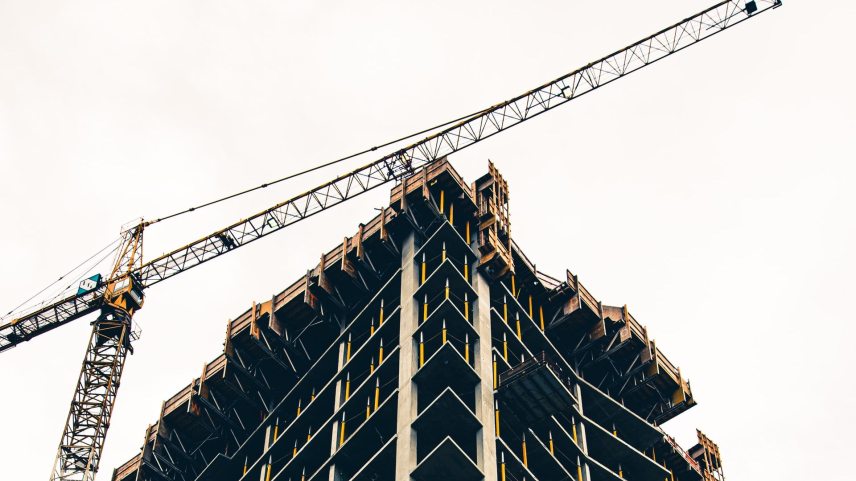Falling Canadian housing investment is starting to weigh on new housing activity. Canada Mortgage and Housing Corporation (CMHC) data shows housing starts fell in September. The drop comes after hitting a multi-year high earlier this year. Even with the drop, building activity is still elevated above historic levels.
Canadian Housing Starts Fell To 271,000 Units
Canadian housing starts slipped lower, but remain elevated. The six-month moving average of the seasonally adjusted annual rate (SAAR) of housing starts fell to 271,068 in September. This represents a decline of 4.8% compared to the previous month — a hefty drop. The six-month trend is preferred by the agency, as it yields more stable insights. Month to month data can be a little volatile with shifts in multi-family units.
Canadian Cities Are Seeing Reduced Market Activity
The non-trend average of housing starts wasn’t all that far off last month. The SAAR of housing starts fell to 251,151 in September, down 4.4% from a month before. Urban starts, those in Canada’s larger cities, represent 223,055 of those units, down 4.5% from the previous month. It might seem like a big drop, but this is still much stronger new housing activity than seen pre-pandemic.
Canadian New Housing Starts
The seasonally adjusted annual rate of new housing starts across Canada.
Source: CMHC; Better Dwelling.
Even With The Decline, Housing Starts Are Elevated From Historic Levels
One interesting point worth taking note of — the rate of declines at the national and urban levels. They’re not far off from each other, with the drop in urban starts only slightly overrepresented. This demonstrates a surprising resilience for non-urban housing. It was thought by many to be a pandemic fad, but starts are moving with urban markets. Country living is still at least as appealing as city living, even with parts of the economy reopening.
The CMHC doesn’t sound particularly worried about the decline impacting supply. “On a trend and monthly SAAR basis, however, the level of housing starts activity in Canada remains high in historical terms,” said Bob Dugan, the agency’s chief economist. “Among Vancouver, Toronto and Montreal, Vancouver was the only market not to register growth in total SAAR starts in September, due to a decline in the multi-family segment.”
A similar trend was revealed with building construction investment recently. The level of activity has fallen off its highs, which will provide a drag on economic growth. The level of activity is still much higher than historic levels though, especially pre-pandemic. There’s still a whole lot of supply coming to market, it’s just normalizing at a more sustainable (but elevated!) level.
Like this post? Like us on Facebook for the next one in your feed.

With 300,000 units under construction. One per person that moves here, let’s go! LOL .
You are understating it. The Liberal vote-importation policy (immigration) is now at 400,000/per annum minimum. Highest immigration rate in the developed world, amidst a housing crisis. Add to that 600,000+ foreign students and 500,000+ temporary foreign workers (TFWs).
Willing to bet 50% of those are investor owned, hoping to flip before completion. Still the only segment non-resident buyers participate in since it’s not a foreign buyer if they sell it before it’s completed.
Probably negative-yielding too, since they’re depending on the government to push prices higher to actually make money.
absolutely right, Enough, enough of the leveraged financing investment, let them take their deposit money and play with crypto if they have guts to be trader or investors, let them come and play in derivatives if they know what that is. residential housing is not their commodity to play. so short sighted, if they want to make money let them buy REIT’s or invest in commercial properties. they spoiled the dream of many people, and these investors or flippers have no right, 1 house per familly or max 2, these guys
Mostly Realtor owned. They buy the lots, then try to sell them before the additional 5% demand is used. Good to a lot of housing supply coming to market, but it sucks we can’t devise a system where three people don’t take a cut before it gets to end users.
If you were a developer, would you screw around with selling units one by one or give them to real estate agents who will buy half a building and then sell them on their own with their own financial risk? I know what I would do.
This is a problem related to low rates. They keep pushing prices higher, so there’s no loss risk. They’ll take as much inventory as possible.
and any additional supply that should be pushing prices down gets absorbed as greater profits for the middle person. I’m guessing a lot of Boomers are leveraging up against their home with a HELOC to secure the cash too.
When rates inevitably rise the best thing to be in and hold is cash. These real estate creeps are going down so bad.